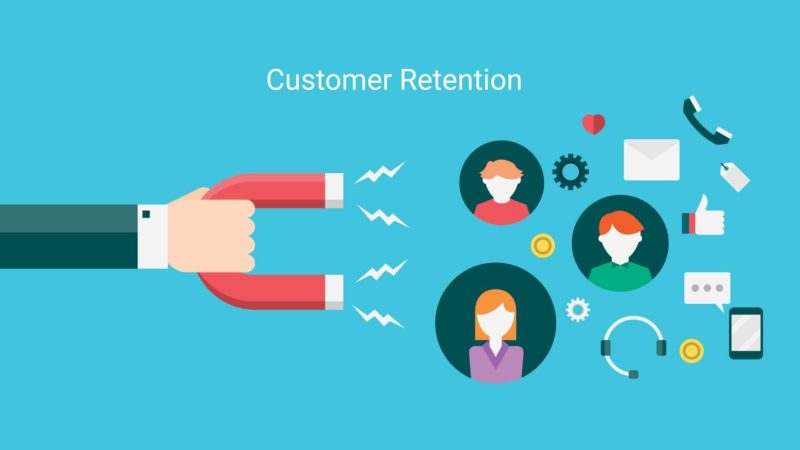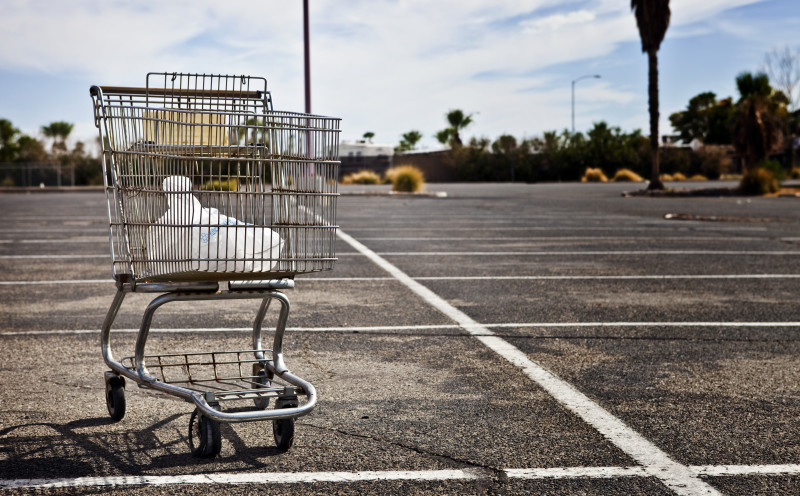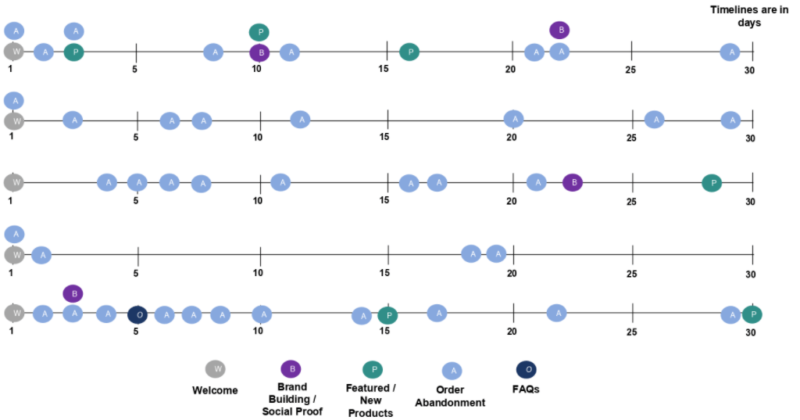How to structure your email program to retain customers
Implementing a comprehensive email retention program may seem daunting, but contributor Sam Welch reminds us of the payoff and explains how to do it.
 If you’re in marketing, I’ll bet that at one point in your professional career you have either heard or learned for yourself that keeping a customer costs less than obtaining a new one.
If you’re in marketing, I’ll bet that at one point in your professional career you have either heard or learned for yourself that keeping a customer costs less than obtaining a new one.
Ideally, repeat customers are a lot like dogs: They are immensely loyal. They stick around longer than they probably should; they speak highly of you to friends and family; and they spend more money with you over time.
Okay, dogs don’t speak or spend money, so that analogy didn’t make sense, but you get the idea — although if you’re like most marketers, you haven’t fully absorbed the lesson and benefited from it financially.
Retention marketing is important. If you haven’t sat down to consider how to keep your customers happy and coming back for more, there’s no time like the present. And if you have, but you’re out of inspiration or lack strategic direction, I hope I can help kick-start a few ideas.
In my first article of this series on retention, I will show you how to leverage what you already know about your customers to engage them effectively with email — and to draw inspiration from your competitors’ efforts.
Segmentation is king
To craft an effective retention strategy, you must first understand your customers and how they behave. Forget for a moment their age and all the other demographic data you’ve stockpiled.
Instead, focus on how they interact with your products as they browse your store. They are essentially doing the work for you and segmenting themselves based on their actions. Recognize which of these behaviors is important and merits its own retention tactics.
Here are some examples:
- What is their purchasing activity? Has it been a while since their last transaction? Consider emailing your new catalog to all customers who haven’t purchased in the last 30 days.
- Did they make their last purchase using a coupon? Send this group a promotional code.
- Have they shown affinity toward a specific category of products? Provide recommendations on their next indulgence.
- Did they leave their cart in the checkout aisle? Give them a gentle reminder to complete that purchase.
- Who are your highest-value customers? Thank them for their loyalty to your brand and throw in a little exclusive bonus offer to encourage them to stay loyal.
Once you’ve got these segments defined, we recommend that you…
Engage your customers with email
Aside from the fixed cost of whatever email service you’re using, emailing your customers is free, and you’ve already got their addresses, so put them to use. These are the email types (and corresponding best practices) you should weave into your retention strategy.
The welcome email
After submitting their email addresses, most online leads expect to receive a welcome email. In general, the goals of the welcome email are to:
- Introduce the user to the company.
- Reiterate the value of the product/service.
- Establish a humanizing tone.
Note that it’s important to acknowledge that this is a welcome email within the subject line. This can be done simply by incorporating “Welcome” or “Hi” within the subject line. Examples include “Welcome to The Family” or “Hello From Company XYZ.”
- Personalize the email: If the user has submitted their name along with their email address, incorporate this information within the email subject line.
- Include your unique value propositions: Use the welcome email to explain what makes your brand different and why customers should choose you.
- Tell users what to expect: Provide users with an overview of how frequently you will be emailing them and what kind of content your emails will feature so that they know what to expect.
- Emphasize customer support: A goal of the welcome email is to humanize the brand. The primary method for accomplishing this is emphasizing customer support, as this shows the customer relationship is valued.
The nurture email
Unlike other email types, the goal of nurture emails is not explicitly to sell, but rather to build your brand among your email subscribers. When users need to purchase a product your company sells, your brand will be the first one they turn to if nurture emails have done their job.
- Educate the customer: Education emails provide users with a better understanding of products, including advantages and creative use cases.
- Get the customer hooked on your brand: Utilize your nurture emails to reinforce your brand and its value propositions.
- Make your business relatable: Tell stories about your business, including where and how it got started and what drives your company today.
The promotional email
These should be an integral part of any email strategy, as they are an effective way to increase conversion.
- Utilize a prominent CTA: Design the email so that the promotional offer is prominently displayed and stands out from any other text in the email. Position the promotional text so that it aligns with the CTA (call-to-action) button.
- Create urgency: Create a sense of urgency around the promotional offer. Provide a countdown or mention that this offer is available for a limited time. Note: Overusing urgency will dilute its effectiveness.
- Include a reason for the offer: Providing a reason for the offer, regardless of the reason, has been shown to improve conversion rates. Reasons can include celebrating a milestone or simply thanking your email subscribers for being part of your community.
The cart abandonment email

Cart abandonment is a big issue in ecommerce; around 70 percent of online shopping carts are abandoned, a Baymard Institute analysis found. These email types can recover a good portion of those.
- Utilize the first email as a reminder: Send the first cart abandonment email shortly after the user abandons their products. This email should simply serve as a reminder of the product left behind and can re-engage users who may have gotten distracted during their purchasing process.
- Send a follow-up email with a discount: For customers who still do not convert, send a follow-up email several days later with a discount or free shipping offer. This email targets price-sensitive users who may have abandoned the cart due to a high final price.
- Highlight the value of the product or your website: Utilize abandonment emails to convey the value of the particular product or the advantages of purchasing from your website. For example, remind customers of free shipping or discounts or emphasize the popularity or features of the abandoned product.
Remember, you can’t assume your customers will respond to a set strategy. Best practices can be followed initially, but testing your ideas is paramount!
Keep tabs on the competition
When developing your retention strategy, it’s useful to keep an eye on the emails your competitors are sending. I recommend that you:
- Identify your competition.
- Become a lead for the competitor by engaging in behaviors of interest (e.g., order complete and cart abandonment).
- Set up a folder in your inbox to receive their emails.
- Wait.
Typically, one month of collection will give you a clear sense of their retention strategy, though some long-tailed verticals may need more time.
After you’ve collected your competition’s emails, begin examining the strengths and weaknesses behind their retention strategy.
- Categorize their emails into the types discussed above (adding/removing thematic groups as needed) and map the emails onto a timeline.
- Analyze email segmentation based on lead, cadence, subject line, content, and design.
- Is your competition leveraging tactics that creatively emulate the best practices covered in the first section? Are there major shortcomings?

This type of gap analysis will help inform new testing ideas for your own retention strategy.
Other considerations for retention
- Checking email on mobile is becoming the norm, especially amongst millennials. Prioritizing mobile is key to success in any email retention efforts.
- Timing should always be a consideration. When is your customer most likely to open your email?
- Less is more. One company I analyzed sent me over 40 emails in 30 days. It was a hilarious example of overcommunication.
- Ask yourself:
- Do the emails reiterate the benefits of the product/service and ultimately increase its value?
- Do they do this using a digestible layout?
- Do they help develop a positive relationship with the customer?
- Are the emails tailored to the goals — and if the goal is returning the customer back to the site/convert, is the path back seamless/frictionless?
Final takeaways
If you’ve finished the article thinking you’ve got a lot of work ahead, well, maybe — but it’s a lot more cost-effective to engage these users than to pay to find new ones. In the end, it’s the revenue and ROI that matter, and returning customers bring a bounty of both.
Now, that said, app retention is a whole different ballgame. In my next article, I will shift the focus over to app retention and demonstrate ways to effectively leverage push notifications. Stay tuned.
Contributing authors are invited to create content for MarTech and are chosen for their expertise and contribution to the search community. Our contributors work under the oversight of the editorial staff and contributions are checked for quality and relevance to our readers. MarTech is owned by Semrush. Contributor was not asked to make any direct or indirect mentions of Semrush. The opinions they express are their own.
Related stories
New on MarTech